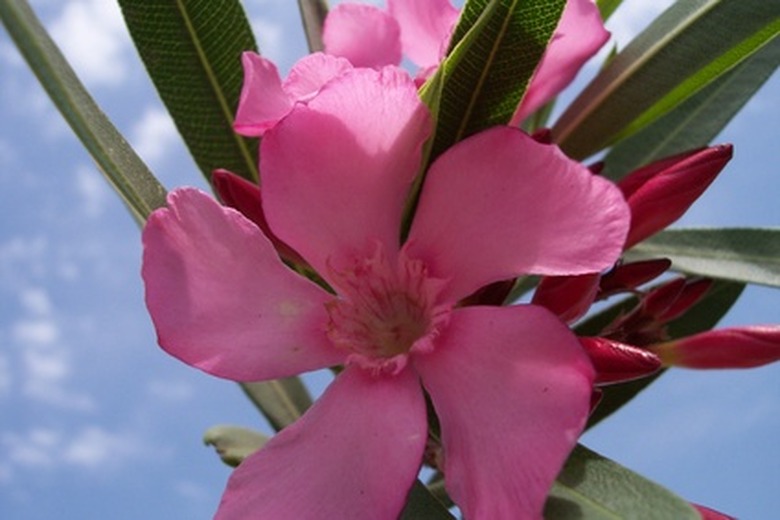Deadly Poisonous Plants Of South Carolina
South Carolina is home to dozens of colorful and beautiful plants and flowers. There are also a few deadly poisonous plants in South Carolina. These plants are often used to landscape yards all across the state, and they are also widely found in state parks and other areas that humans and animals commonly frequent. Being able to identify these poisonous plants will help you to avoid their danger.
Nerium Oleander
The nerium oleander is a part of the apocynaceae family of plants. It is an evergreen shrub with whorled, smooth, leathery leaves. The flowers that cluster at the tip of the poisonous plant are funnel-shaped and either pink, yellow, white or red. All parts of this plant are poisonous and can be fatal if ingested or cause a variety of symptoms such as nausea, drowsiness, vomiting, bloody diarrhea, stomach pain, irregular heartbeat, slowed pulse and pupil dilation, says North Carolina State University.
- South Carolina is home to dozens of colorful and beautiful plants and flowers.
- The flowers that cluster at the tip of the poisonous plant are funnel-shaped and either pink, yellow, white or red.
Tree Tobacco
The tree tobacco, also referred to as nicotiana glauca, is a part of the solanaceae family of plants. It is a small tree or shrub that has white-waxy leaves that alternate. The flowers are yellow-green to cream in color and are tubular. The flowers and leaves are poisonous and can be fatal if ingested, according to North Carolina State University. It can also cause other symptoms, including vomiting, respiratory failure, diarrhea, dizziness, slow pulse and collapse.
Star of Bethlehem
The Star of Bethlehem, also referred to as ornithogalum umbellatum, is a part of the liliaceae family of plants. The flowers on this herbaceous perennial are star-like in shape and range from pale yellow to white in color. The leaves are light green and narrow. The bulbs are most poisonous, but the entire plant can be dangerous. If this plant is ingested it can cause nausea, shortness of breath, salivation, diarrhea and vomiting. When it is ingested or comes into contact with the tongue, lips or throat, it can cause burning, pain and swelling. Prolonged contact with the skin can lead to skin irritation, says North Carolina State University.
- The tree tobacco, also referred to as nicotiana glauca, is a part of the solanaceae family of plants.
- The flowers on this herbaceous perennial are star-like in shape and range from pale yellow to white in color.
